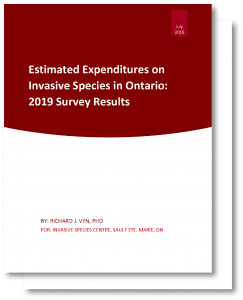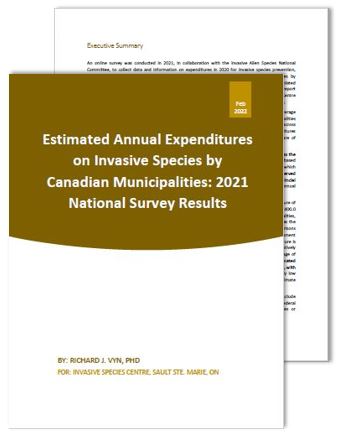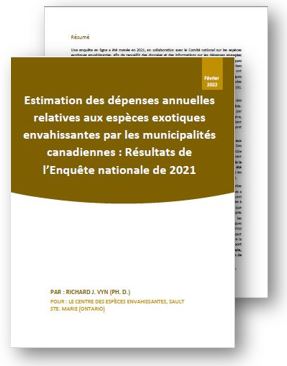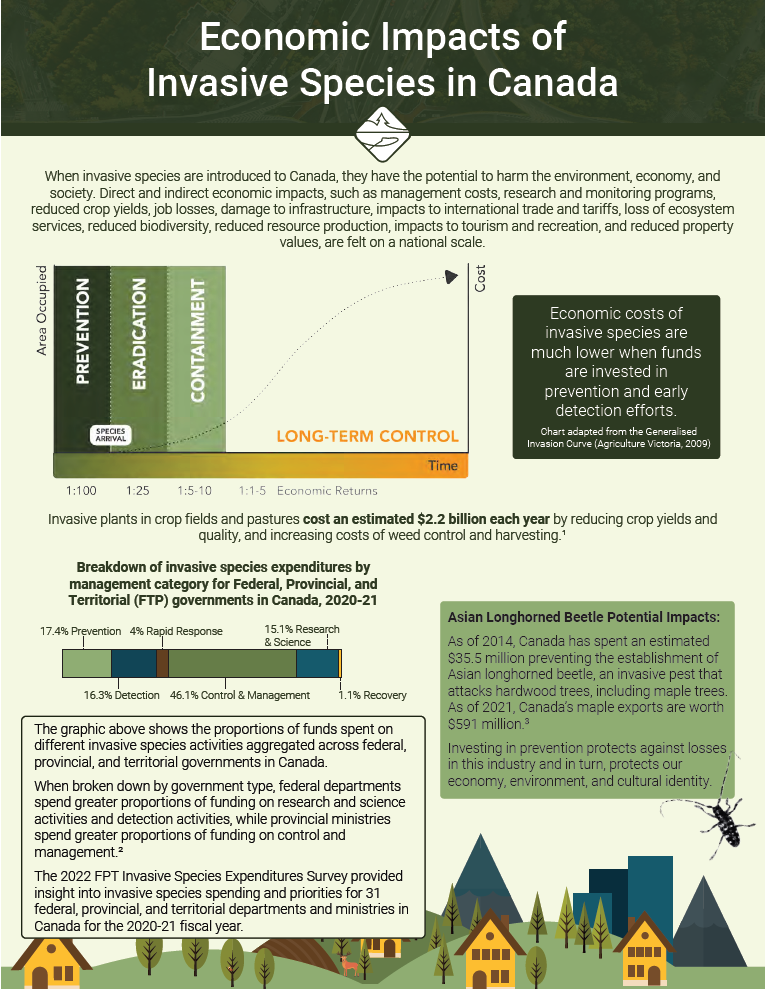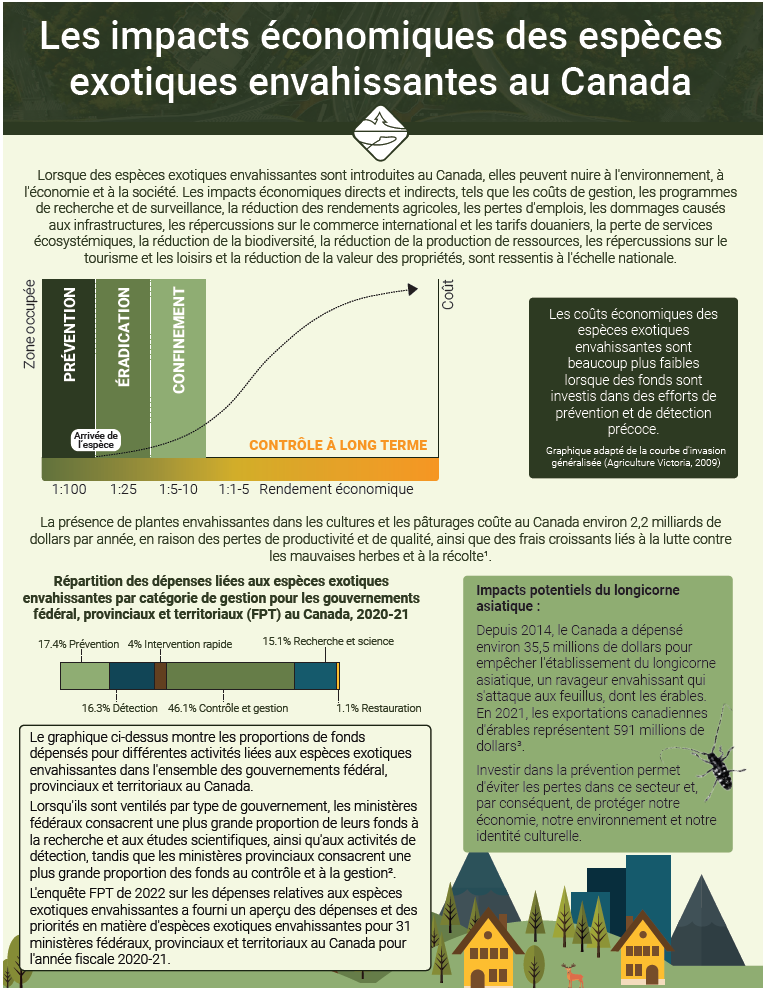Economic impacts of invasive species
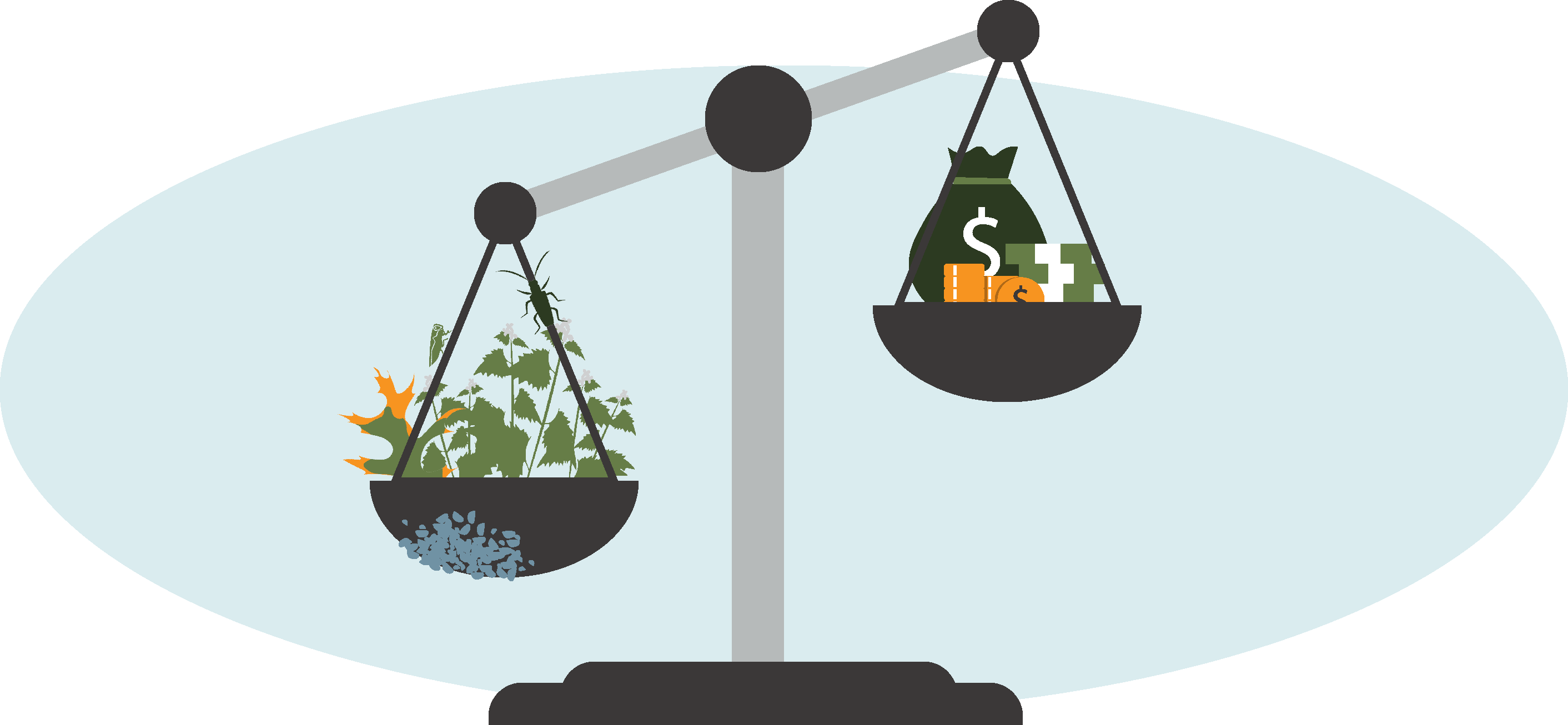
Municipalities and conservation authorities are estimated to spend $50.8 million per year on invasive species in Ontario alone. Across Canada, invasive species pose economic threats at the federal, provincial, municipal, and individual levels.
Direct economic impacts
Direct economic impacts of invasive species include management costs (mechanical, chemical, and biological), research and monitoring programs, reduced crop yield, job losses (such as in the case of reduced forestry production), damage to infrastructure, and impacts to international trade and tariffs.
Indirect economic impacts
Indirect economic impacts of invasive species can be much more challenging to quantify, and in some cases, are significantly more devastating. Examples include loss of ecosystem services (i.e. increasing flooding, reducing resiliency to climate change), reduced biodiversity, reduced resource production, impacts to tourism and recreation, and reduced property values (such as cottage properties overrun by zebra mussels or city lots with trees affected by emerald ash borer).
Economic costs of invasive species are much lower when funds are invested in prevention and early detection efforts. Once an invasive species spreads, management is exponentially more expensive and less efficient.
On this page:
2019 Economic Impacts Study
Between 2017-2019, we reached out to Ontario municipalities and conservation authorities via phone and email to find out how much they spend on invasive species each year. We received data from 147 municipalities and 23 conservation authorities specific to the most recent fiscal year or annual expenditures.
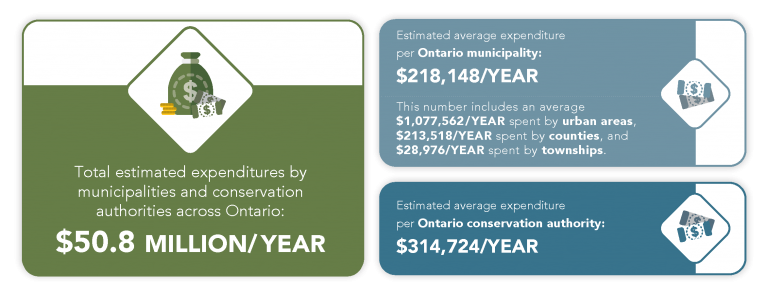
This report estimates how much Ontario municipalities and conservation authorities are spending on invasive species, but this is just a fraction of the economic impacts of invasive species. Combined potential impacts on agriculture, fisheries, forestry, healthcare, tourism, and the recreation industry are estimated to be approximately $3.6 billion per year in Ontario!
Where does the money go?
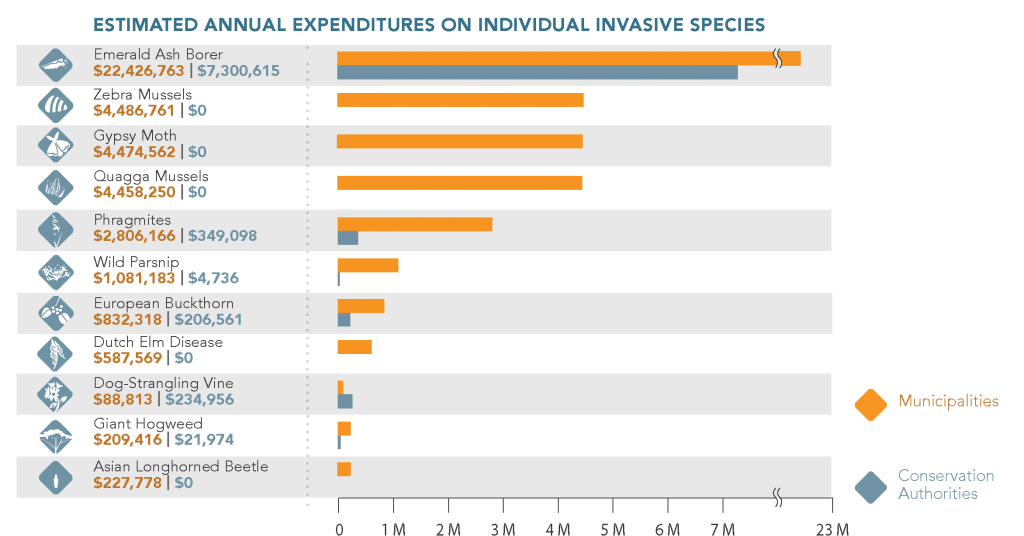
Our study found that municipalities and conservation authorities are spending the most money on emerald ash borer. The next highest expenditures for municipalities are zebra and quagga mussels and Spongy moth.
To learn more about the economic impacts of invasive species on Ontario municipalities and conservation authorities, check out our fact sheet and read the full study below!
2021 National Invasive Species Municipal Expenditures Survey
With funding provided by Environment and Climate Change Canada, the ISC collaborated with the Invasive Alien Species National Committee to survey municipalities across Canada to find out more about their invasive species expenditures and priorities.
We disseminated the survey in 2021 and received responses from 231 municipalities reporting their data from 2020. Visit our social media channels to see some key results from the final report.
You can read the English report here and the French report here.
Economic Impacts of Invasive Species in Canada, including invasive species expenditures by management category for Federal, Provincial, and Territorial governments
Research from 2023 Compared the Costs of Biological Invasions to Natural Hazards
The study by Turbelin et al. (2023) quantified the economic cost of invasive species relative to natural hazards using data from the InvaCost database version 4.1. It revealed that the global economic losses from biological invasions ($1,208 billion) were in the same order of magnitude as economic losses from storms ($1,913.6 billion) and earthquakes ($1,139.4 billion) and highlighted the need for action and policy changes to protect the global economy.
The study also found that invasion costs increased faster than natural hazard costs over time with a 702% increase in reported losses between the periods of 1980 – 1999 and 2000 -2019.
A look at how the economic costs compared:
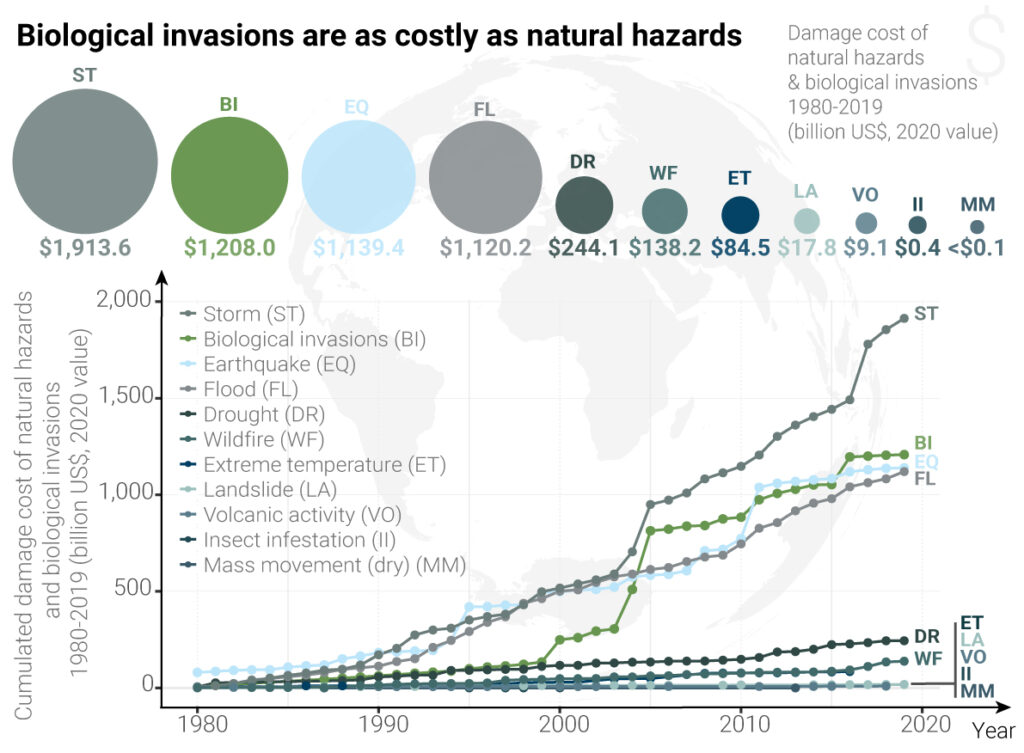
About InvaCost
InvaCost is a global, online database created to harmonize data on the cost of worldwide biological invasions. It uses a systematic, standardized methodology to collect information from peer-reviewed articles and grey literature. It has been a valuable source of data for several analyses on the economic impacts of invasive species.
Further Readings
An Assessment of the Costs and Economic Impacts of Invasive Species in Ontario (2017)
This report provides an estimate of total expenditure by municipalities in Ontario for prevention, detection, and control and management of invasive species. This estimate is derived based on the results of the survey, “Economic Impacts of Invasive Species to Ontario Municipalities”, which was conducted by the Invasive Species Centre during January and February of 2017.
Urban Forests: The Value of Trees in the City of Toronto
This report examines the benefit of investment into the urban forests in Toronto and how much should be spent to maintain them.
A Value of Urban Forests in Cities across Canada
This report examines the economic and environmental benefits of forests in and around Halifax, Montreal, and Vancouver.
Invasive Species: A Costly Catastrophe for Native Biodiversity
This study looks at the public cost of invasive species that are brought in for ornamental use but spread to the natural environment.
An Ounce of Prevention or a Pound of Cure: Bioeconomic Rick Analysis of Invasive Species
This study determines optimal resource allocation to prevention versus control of invasive species, finding that we should be investing more into prevention.
Economic Impacts of Non-Native Forest Insects in the Continental United States
This study developed a model for determining current and future costs of invasive forest insects, providing more information for evaluating policy and management option.
Estimates of the Potential Cost of Emerald Ash Borer (Agrilus planipennis) in Canadian Municipalities
This study looks at the costs associate with street and backyard trees being removed due to emerald ash borer infestations.
Economics of Harmful Invasive Species: A Review
This study reviews the economics behind how to manage invasive species with regard to the difficultly of policy making.


